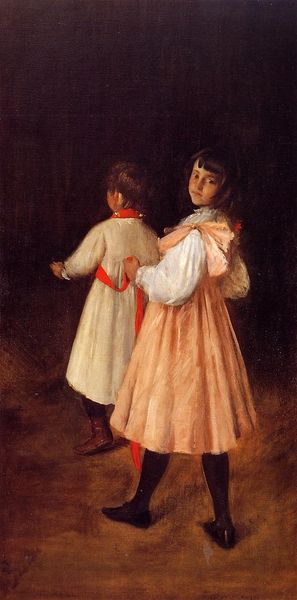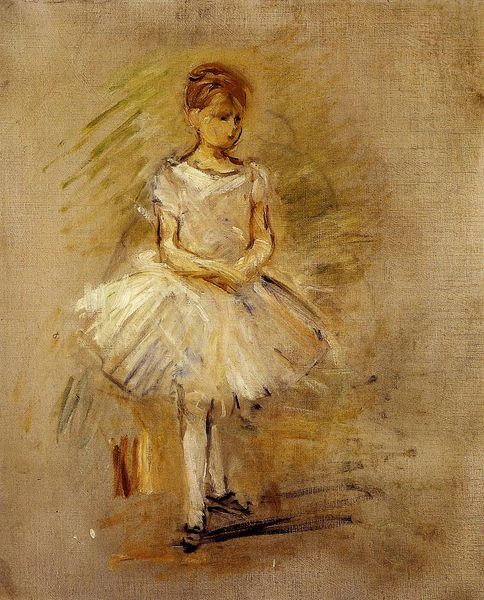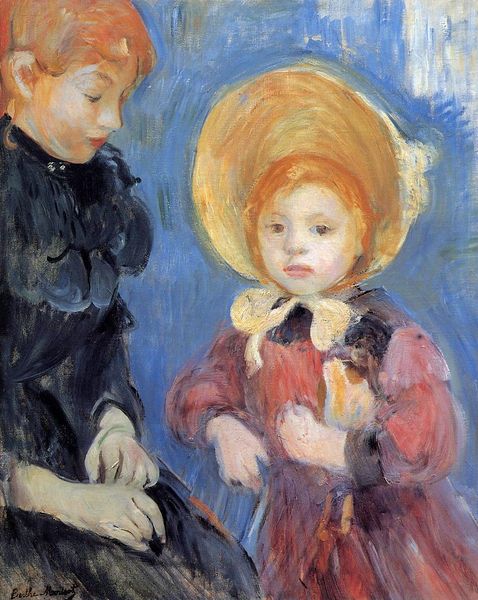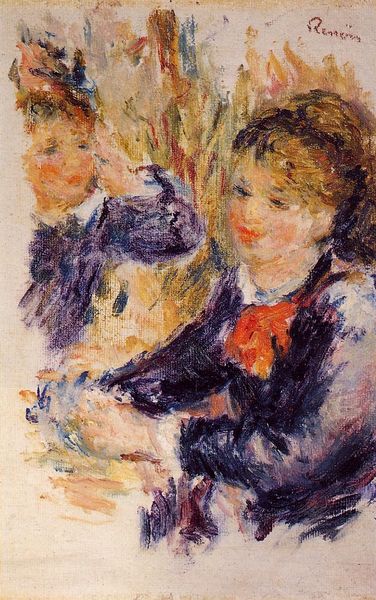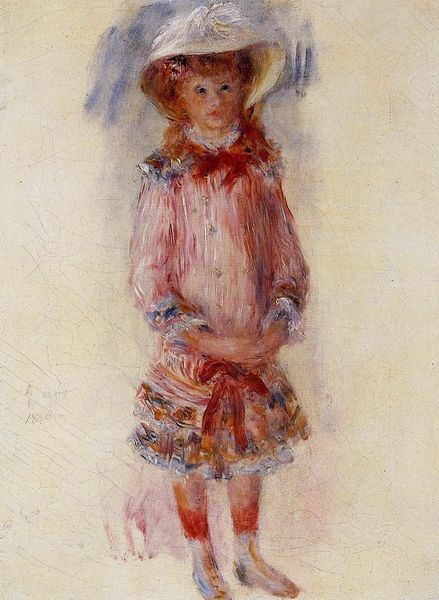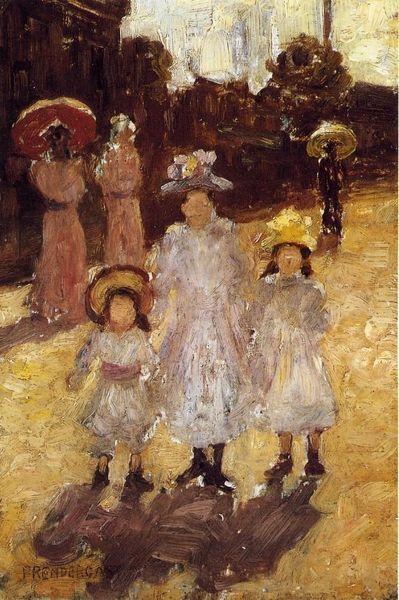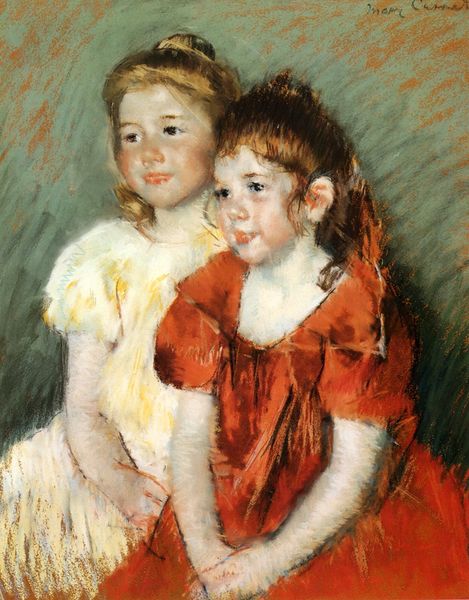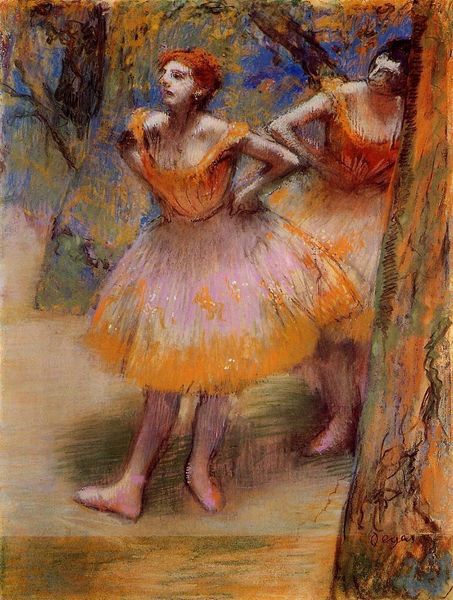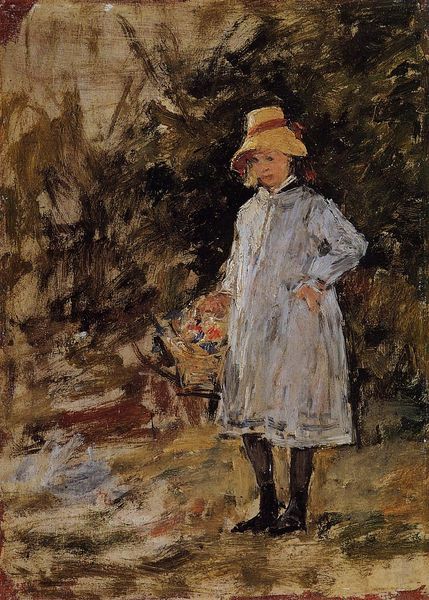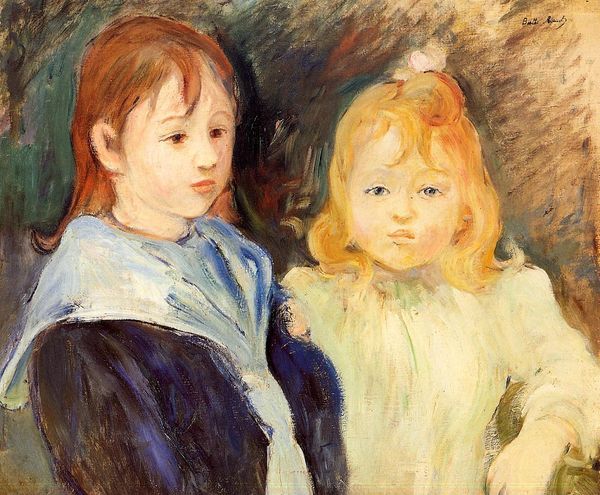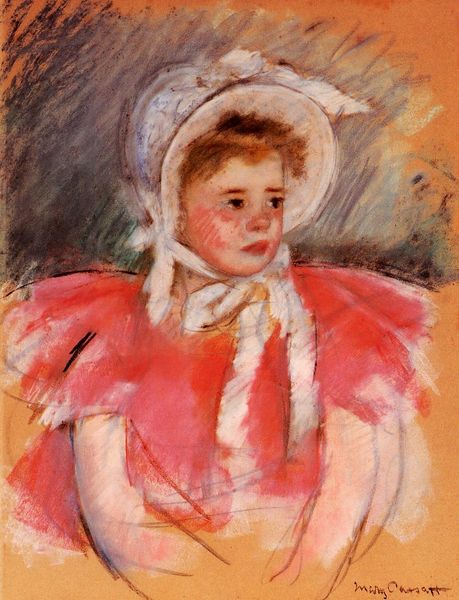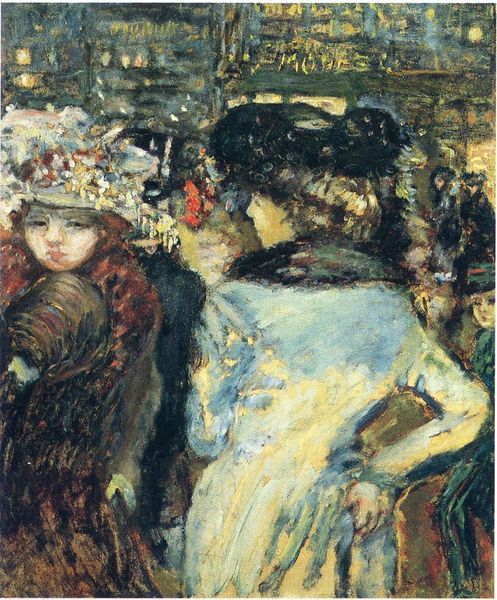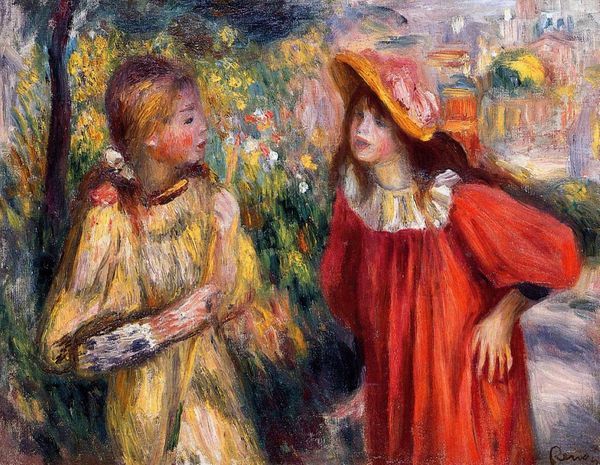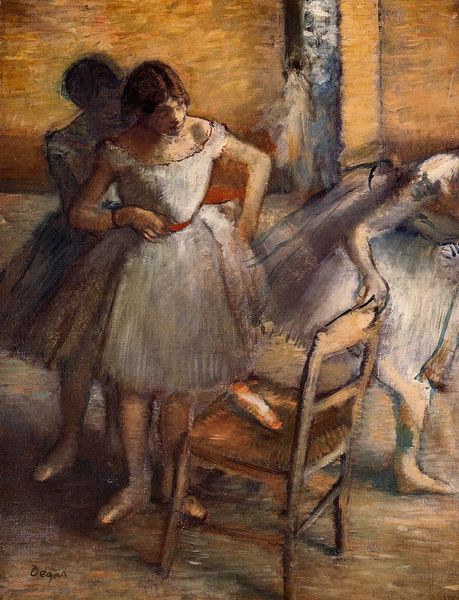
gouache, pencil, pastel
#
portrait
#
gouache
#
impressionism
#
gouache
#
figuration
#
oil painting
#
pencil
#
france
#
genre-painting
#
pastel
#
portrait art
Copyright: Public domain
Editor: Edgar Degas’s "The Mante Family," created around 1889 using pastel and gouache, depicts three figures. The young dancer stands out, doesn't she? There's an almost voyeuristic quality to Degas’s works. I’m curious about how this piece fits within its social context. What stands out to you about it? Curator: It's true, Degas often blurred the lines between observer and voyeur. This painting reflects a specific social dynamic—the rise of the ballet and its association with wealthy patrons. Look at the juxtaposition of the elaborately dressed ballerina and the more plainly dressed girl. What might that contrast suggest about their roles and expectations within Parisian society? Editor: Perhaps it shows a rigid social hierarchy. The ballerina’s costume signifies privilege while the other girl embodies more traditional, constrained gender roles? Curator: Exactly! And the woman behind them could be interpreted as embodying both care and control. This dynamic aligns with Degas' broader interest in capturing the complexities of Parisian life and the performance of social status. The medium – pastel and gouache – also allows for a certain softness, perhaps subtly commenting on the idealized, almost ephemeral nature of these performances. How do you think contemporary audiences viewed pieces such as this? Editor: Considering the growing popularity of ballet, probably with both admiration and, perhaps, a little societal anxiety around its changing landscape and rising nouveau riche. Thanks! Curator: It's through this kind of investigation, analyzing the social undercurrents, that we can truly appreciate Degas’s contribution as more than just an "Impressionist" painter, but as a keen social observer of his time.
Comments
No comments
Be the first to comment and join the conversation on the ultimate creative platform.
